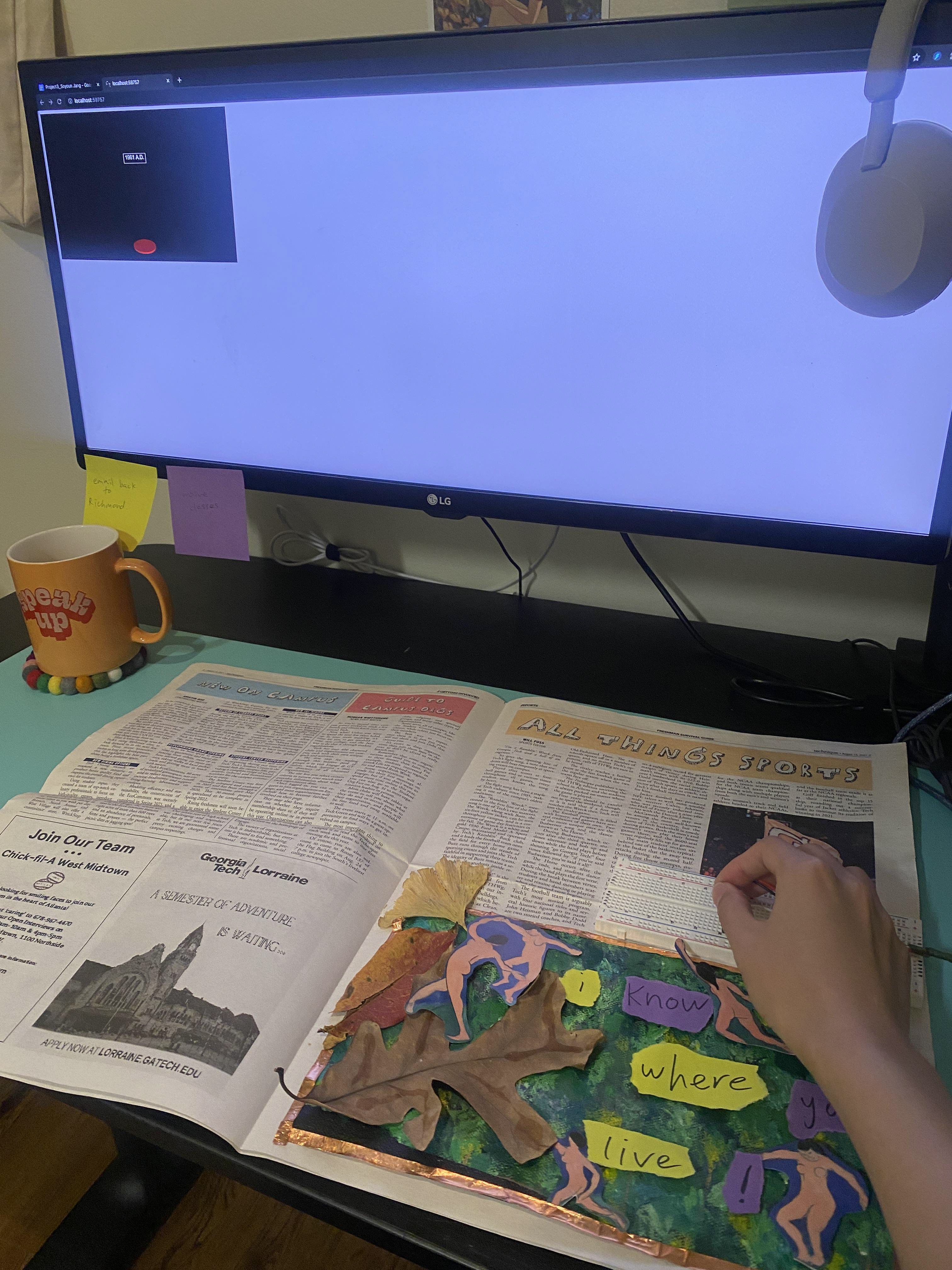Arduino Project:
An interactive radio
Physical Computing for Reflective climate change journalism
This project explores how to reintroduce interactivity into traditional media and, in turn, design a more thoughtful and engaging approach to news consumption. Before the internet became the primary source of news and information, people relied on various traditional methods to stay informed about issues related to climate change. Some ways people obtained news in the pre-digital era include print newspapers, radio broadcasts, TV, magazines, and public libraries. Therefore, we present an Arduino project: an interactive radio that plays audio when triggered by the user, using the potentiometer
(2024)
A solo project in 'Computing as an Expressive Medium' at Georgia Tech






Technical Requirements
Hardware:
● Arduino board
● Potentiometer
● USB cable for Arduino
● Computer with Python installed
Hardware Setup:
● Connect your Arduino to the computer using a USB cable.
● Connect the potentiometer to the Arduino. Connect one end of the potentiometer to the 5V pin, the other end to the GND pin, and the middle pin to the analog input pin (e.g., A0).
Software:
● Python
● VPython library
● Pygame library
● Pyserial library
● Arduino IDE (for uploading Arduino code)
Goals
- to explore the integration of Arduino and Python within the Visual Studio environment to create an engaging audio/visual/interactive radio experience.
- to develop a dynamic radio system that not only plays audio(news) but also provides a visual representation of audio data.
- The interactive aspect involves using sensors or input devices connected to Arduino to influence the radio's behaviour, such as changing the volume.
Design Statement
Design researchers strategically create friction to address, uncover, elicit, and question the status quo, with the goal of mitigating issues related to climate change and redefining the essence of our everyday life (Korn & Voida, 2015). This involves examining existing infrastructures or pervasive media used daily and challenging the beliefs or assumptions within communities (Ratto & Hertz, 2019). For instance, in the context of climate change and sustainability, providing alternative media can motivate the public to speculate about how the status quo might be different, involving them in collectively imagining positive futures (Soden et al., 2021). Such an approach can serve as a starting point for users to adopt a position or stance, encouraging them to pause for critical reflection and take actions toward infrastructuring civic engagement in their everyday lives.
Specifically, with the prototype, our aim was to advocate for reimagining climate journalism by utilising traditional media (radio and newspapers) to rethink the practice of news consumption and elicit active conversation about the environment. Additionally, we focused on bringing the voices of children from different generations into the centre of discussion. Executing this, we included media content featuring children speaking about the environment in the system, such as "Children (in 1966) imagine life in the year 2000" from the BBC Archive. To play different audio files, the users can adjust the potentiometer to change the voltage, which corresponds to different decades. Audio files will play based on the mapped voltage range to years (1960-2020).
Below is the full list of audio content that users can tune into:
● 1966: Children imagine life in the year 2000 | Tomorrow’s World | Past Predictions | BBC Archive
● Walter Cronkite's Earth Day broadcast in 1970
● Thames Televisions 'Warming Warning'- 1981
● The Greenhouse Effect explained in 1988 | Retro 80s environment
● Listen to the Children - Severn Cullis-Suzuki's famous speech on the environment (1992)
● You Are Stealing Our Future: Greta Thunberg, 15, Condemns the World’s Inaction on Climate Change (2018)
In terms of visual aesthetics, I created a nature-themed canvas painting using acrylic paint (refer to the photos below). Originally, I envisioned attaching the Arduino to either the newspaper or the canvas. However, after numerous trials and errors, I discovered that the potentiometer was too fragile and impractical in such a setup (as depicted in the bottom right image of my prototype). Consequently, I had to pivot to using the breadboard and affixing it to the newspaper.



Interaction
● Adjust the potentiometer to change the voltage.
● Observe the cylinder's length changing in the VPython window.
● The label in the VPython window will display the corresponding year based on the voltage.
● Audio files will play based on the mapped voltage range to years.
Final Video
Interaction
